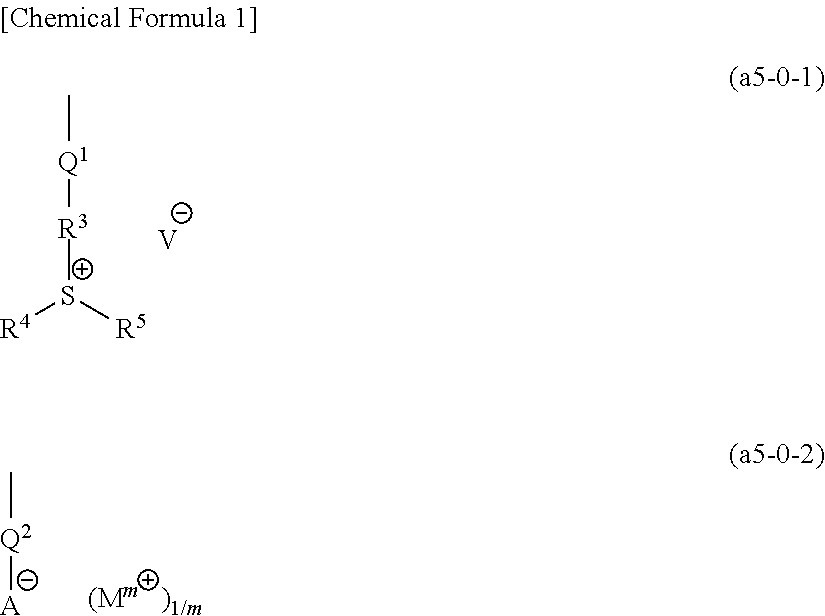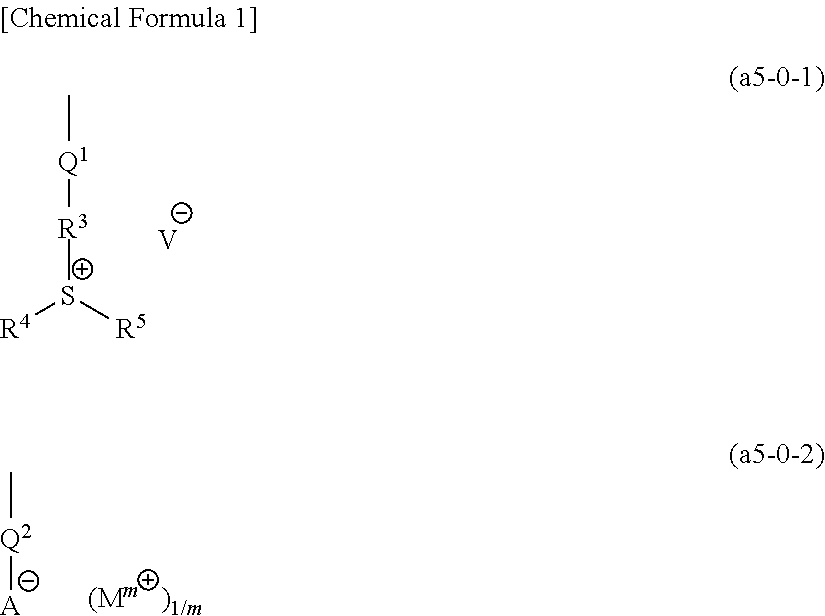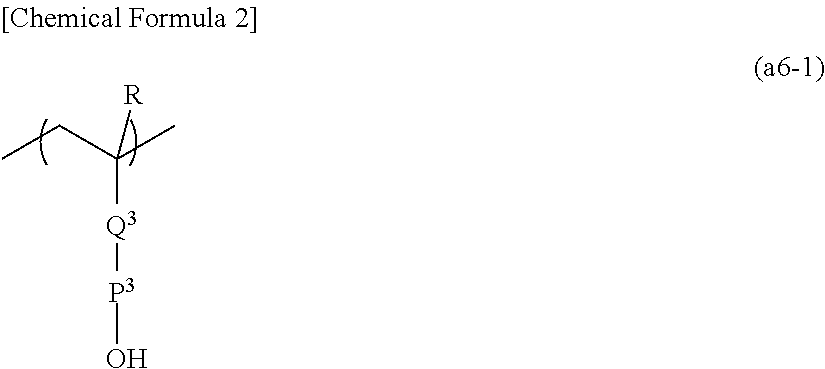Resist composition for EUV or eb, and method of forming resist pattern
- Summary
- Abstract
- Description
- Claims
- Application Information
AI Technical Summary
Benefits of technology
Problems solved by technology
Method used
Image
Examples
examples
[1138]A more detailed description of the present invention is presented below based on a series of examples, although the present invention is in no way limited by these examples.
[1139]In the examples, unless defined otherwise, a compound represented by a chemical formula (1) is designated as “compound (I)”, and a similar labeling system applies for compounds represented by other chemical formulas.
Component (A) Synthesis Examples
synthesis example a1
Synthesis of Copolymer (11A)
[1140]Step of Synthesizing Precursor Polymer:
[1141]In a separable flask fitted with a thermometer, a reflux condenser and a nitrogen inlet tube, 14.00 g (82.28 mmol) of a compound (21A), 41.84 g (159.48 mmol) of a compound (11A) and 7.70 g (25.38 mmol) of a compound (51A) were dissolved in 80.53 g of a mixed solvent (EL / GBL=80 / 20 (weight ratio)). As a polymerization initiator, 18.70 mmol of dimethyl azobisisobutyrate (V-601, manufactured by Wako Pure Chemical Industries, Ltd.) was then added to the resulting solution and dissolved.
[1142]This solution was then added dropwise, over 4 hours and under a nitrogen atmosphere, to 44.29 g of a mixed solvent (EL / GBL=80 / 20 (weight ratio)) that had been heated to 80° C. Following completion of the dropwise addition, the reaction solution was stirred under heat for one hour, and the reaction solution was then cooled to room temperature.
[1143]Subsequently, the obtained polymerization reaction solution was added dropwi...
synthesis examples a2
to A27
Synthesis of Copolymers (1A) to (10A), (12A) to (20A), and (22A) to (28A)
[1150]With the exceptions of using compounds represented by chemical formulas shown below in the prescribed molar ratio as the monomers in the aforementioned step of synthesizing a precursor polymer described in the aforementioned [Synthesis of Copolymer (11A)], and using compounds represented by chemical formulas (c1A) to (c8A) shown below as the salt exchange compound, copolymers (1A) to (10A), (12A) to (20A), and (22A) to (28A) were obtained using the same method as the aforementioned [Synthesis of Copolymer (11A)].
[1151]The amount of residual monomer (the amount of the monomer that yields the structural unit (a5)) within each of the copolymers was adjusted appropriately by altering the mixing time for the two layers (namely, the number of times the dropping funnel was shaken) during the liquid-liquid extraction performed during the step of washing the precursor polymer with water.
PUM
 Login to view more
Login to view more Abstract
Description
Claims
Application Information
 Login to view more
Login to view more - R&D Engineer
- R&D Manager
- IP Professional
- Industry Leading Data Capabilities
- Powerful AI technology
- Patent DNA Extraction
Browse by: Latest US Patents, China's latest patents, Technical Efficacy Thesaurus, Application Domain, Technology Topic.
© 2024 PatSnap. All rights reserved.Legal|Privacy policy|Modern Slavery Act Transparency Statement|Sitemap



